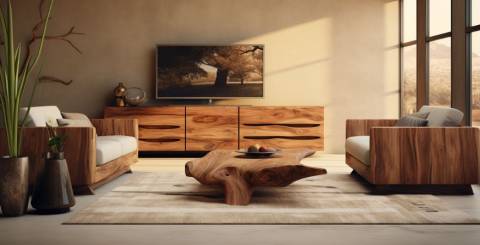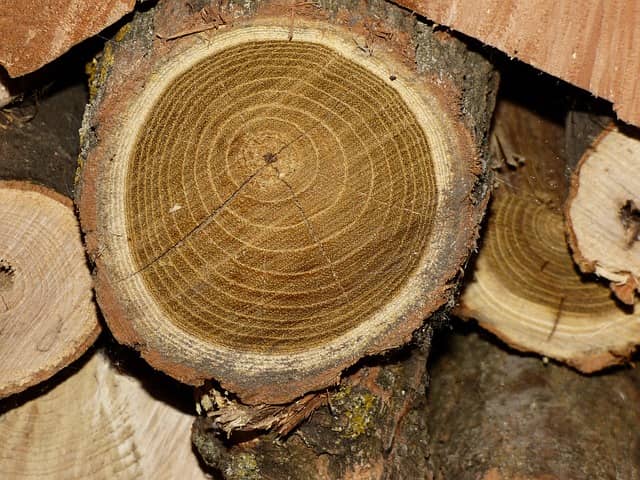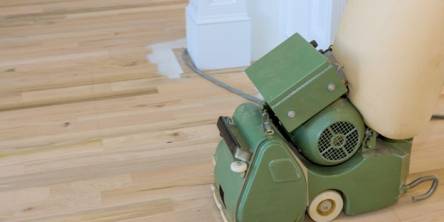What You Need to Know About Acacia Wood: 2025 Guide

Acacia wood is taking the design world by storm, especially in 2025! It’s tough, packed with character, and it brings a warm, golden vibe to a room. People love it because it holds up well and looks high-end without feeling fussy. Dressing a modern living room? Fixing up a patio? Acacia slips right in—coffee tables, dining sets, outdoor benches—you name it.
So why does it stand out? Think dense, durable grain that shrugs off daily bumps, rich texture that looks good in matte or gloss, and a natural warmth that makes spaces feel inviting. Below, we’ll break down the key features of acacia wood, the real-world benefits, and what to keep in mind when choosing acacia for both indoor and outdoor furniture.
What is Acacia Wood?

Acacia wood comes from the acacia tree, native to Australia, but has spread to many other regions, including Africa and parts of Asia. It’s a fast-growing tree, so it's popular for sustainable forestry. You can find acacia trees growing in dry, tropical areas, and these trees have adapted to thrive in places with little rainfall. They’re hardy—surviving in tough conditions, which feels right, given how tough and durable the wood is.
Acacia wood has been used for thousands of years. Ancient Egyptians, for example, used it to craft coffins and other sacred items. The durability of acacia wood was perfect for making things meant to last. In more modern times, it’s a go-to for making furniture, flooring, and even small kitchen items like cutting boards and bowls. I remember the first time I bought an acacia cutting board. I had no idea what acacia was, but I noticed how heavy and solid it felt, and the grain was beautiful—it almost seemed too nice to chop vegetables.
The characteristics of acacia wood are what set it apart from other woods. First off, it's incredibly dense. This makes it resistant to scratches and dents, which is why you’ll often see acacia used for furniture that gets a lot of use, like dining tables or outdoor furniture. When I first got my acacia dining table, I was worried it would get ruined by daily wear and tear. But two years later, it still looks as good as new, even with a toddler throwing toys on it and regular family meals!
Acacia's grain pattern is also worth mentioning. It has lovely, swirling patterns that are totally unique to each piece of wood. No two acacia pieces look the same. The natural color can vary from a light honey tone to deep, rich browns, sometimes all within the same piece. It gives furniture or acacia decor a warm, earthy vibe. I often stare at the grain of my coffee table, noticing new patterns I hadn’t seen before.
One thing I’ve learned about acacia is that it’s naturally water-resistant. This makes it great for outdoor use, though you still need to take care of it if you want it to last. When I left an acacia chair out in the rain without any protection, it held up for a while, but over time, it started to wear down. Lesson learned—just because it’s water-resistant doesn’t mean it’s completely weatherproof. But overall, it’s a super durable material that can handle much of what life throws at it, whether spills, scratches, or the elements.
In short, acacia wood is a strong, beautiful, and versatile material with a long history of use. It’s perfect for anyone looking to invest in quality furniture or decor that’ll last.
Acacia Wood for Furniture: Pros and Cons
When it comes to furniture, acacia wood has a lot going for it. The first time I saw an acacia dining table, I was blown away by how rich and warm the wood looked. It had this smooth, polished finish, and the grain patterns were just mesmerizing. But there’s more to acacia wood than just looks. Let’s break down the pros and cons to give you a better idea of whether it’s the right choice for your home.
Pros of Acacia Wood for Furniture:
-
Durability: Acacia is known for being one of the toughest woods out there. It’s dense and hard, which means it can withstand daily wear and tear better than a lot of other types of wood. If you’ve got kids, pets, or just a busy household, this is a big win. I’ve had an acacia coffee table for about three years, and despite constant use (and some abuse), it barely shows any signs of damage. It can handle scratches, bumps, and even the occasional dropped object.
-
Water Resistance: Acacia has natural oils that make it water-resistant. This doesn’t mean it’s waterproof, but it’s much less likely to warp or swell compared to other woods. This is one reason acacia is used for outdoor furniture. We have an acacia bench outside that has held up really well, even in damp conditions. As long as you treat it properly (which I’ll get to later), it’ll stay looking good for years.
-
Unique Appearance: Every piece of acacia wood furniture has its own character. The grain patterns can range from tight, subtle swirls to bold, dramatic streaks, making each piece one of a kind. Plus, the color variations—from light golden hues to deep reddish-brown tones—give the wood a richness that you don’t always find with other types of wood. I love that our acacia dining table feels like a piece of art as much as it’s a functional piece of furniture.
Cons of Acacia Wood for Furniture:
-
Potential for Cracking: Despite its toughness, acacia wood can be prone to cracking if it’s not properly cared for. This usually happens when the wood dries out or when it’s exposed to extreme temperature changes. I made the mistake of placing a piece of acacia wood furniture too close to a heat vent once, and I noticed a small crack forming after a few months. Now I make sure to keep my acacia wood furniture away from direct heat or sunlight.
-
Requires Maintenance: Acacia wood does need some maintenance to keep it looking its best. You’ll want to oil it periodically to maintain its moisture and prevent cracking. If it’s being used outdoors, you’ll need to seal it to protect it from the elements. It’s not super high-maintenance, but if you’re looking for something you can just forget about, this might be a downside. Personally, I don’t mind the upkeep since it gives me an excuse to take care of something I love.
How Acacia Compares to Other Woods:
-
Oak: Oak is another popular choice for furniture, known for its strength and durability. However, acacia tends to be harder than oak, making it a bit more resistant to dents and scratches. Oak also has a more traditional grain pattern, while acacia’s swirling, unique patterns give it a more modern, rustic look. If you’re looking for something with a bit more character, acacia is the way to go.
-
Pine: Pine is much softer than acacia, which makes it more affordable but also less durable. Pine is easier to dent and scratch, so if you’ve got an active household, acacia might be a better long-term investment. On the flip side, pine is lighter and easier to move around if that’s something you care about.
-
Teak: Teak and acacia are often compared because they both have natural oils that make them water-resistant. However, teak is much more expensive. Acacia gives you a similar look and durability for a fraction of the cost, though teak does have a slight edge in terms of outdoor longevity. If you’re on a budget but still want something that’ll last, acacia is a great alternative to teak.
In the end, acacia wood is an excellent choice for furniture, whether you’re looking for something durable for your living room or a stylish outdoor set. Just keep in mind the need for occasional maintenance and be mindful of where you place it to avoid cracking. If you love unique, beautiful pieces that are built to last, acacia is worth considering.
Sustainability of Acacia Wood
One of the biggest questions I had when I first started researching acacia wood was whether it was actually eco-friendly. It’s easy to get caught up in how beautiful and durable the wood is, but if it’s not sustainably sourced, it could still damage the environment. After some research, I was pleasantly surprised to learn that acacia wood is considered a sustainable option, especially compared to many other types of hardwoods.
Is Acacia Wood Eco-Friendly?
In short, yes—acacia wood is eco-friendly, and there are a couple of reasons for that. First, acacia trees grow incredibly fast. Unlike other hardwoods like oak or teak, which can take decades or even centuries to mature, acacia trees can grow to full size in just five to seven years. This quick growth rate makes it much easier to manage sustainable harvesting practices. Because the trees can be replanted and regrown in a relatively short amount of time, there’s less pressure on the environment compared to slower-growing trees. That’s a big deal when you think about the balance between consumer demand and forest conservation.
Another reason acacia is eco-friendly is its natural resilience. Acacia trees can thrive in poor soils, dry climates, and even areas with little rainfall. This means they don’t require the same level of irrigation or chemical fertilizers as other plants, making their cultivation less harmful to surrounding ecosystems. It's like nature designed this tree to have a low impact on the environment. That’s a nice bonus when you’re choosing materials for your home, knowing that your furniture or decor isn’t contributing to deforestation or excessive resource use.
How It's Harvested and Replanted Sustainably
Acacia wood can only be sustainable if it’s harvested properly. Responsible acacia wood producers follow strict guidelines to ensure that when trees are cut down, they are replanted in managed forests. This practice is called sustainable forestry, and it's designed to ensure that for every tree harvested, a new one is planted in its place. Some regions, like Australia and parts of Southeast Asia, have specific laws regulating how much acacia can be harvested at once to prevent over-harvesting and forest degradation.
I visited a small furniture maker a few years ago who sourced their acacia wood from a sustainably managed forest in Thailand. They explained how their suppliers only work with forests that are constantly monitored to ensure that replanting is happening as quickly as trees are being harvested. They even showed me how acacia trees are often part of reforestation projects because they grow so fast and help rebuild damaged ecosystems. That really stuck with me—it’s not just about making a beautiful table; it's also about the long-term impact on the environment.
Certification to Look For When Purchasing
If you’re interested in purchasing acacia wood furniture but want to make sure it’s sustainably sourced, there are a few certifications to look out for. One of the most important ones is the FSC (Forest Stewardship Council) certification. This label ensures that the wood has been sourced from a forest that’s managed in a way that maintains biodiversity, benefits local communities, and doesn’t contribute to deforestation. Anytime I’m buying wood furniture, whether it’s acacia or another type of wood, I always check for the FSC logo.
Another certification that’s good to know about is PEFC (Programme for the Endorsement of Forest Certification). It’s a global organization that promotes sustainable forest management and has strict standards for ensuring that forests are maintained and protected. It’s a little less common than the FSC label but just as credible. When I bought an acacia wood coffee table a few years back, I made sure it had the FSC certification, and it gave me peace of mind knowing that I wasn’t supporting harmful logging practices.
In summary, acacia wood is a highly sustainable choice when it comes from responsibly managed sources. Its fast growth rate, low water needs, and ability to thrive in challenging environments all contribute to its eco-friendly reputation. By looking for certifications like FSC or PEFC, you can make sure that the acacia furniture you bring into your home is not only beautiful and durable but also kind to the planet. And that’s a win-win in my book.
Caring for Acacia Wood Furniture
Acacia wood furniture is not only stunning but also super durable, so it’s a great investment if you're looking for pieces that’ll last for years. However, like any high-quality material, it does require a little bit of TLC to keep it looking its best. Over the years, I’ve picked up some tried-and-true tips for keeping my acacia wood pieces in top shape. So, if you’ve just bought an acacia wood table or some new chairs, let me walk you through how to care for it.
Simple Tips for Cleaning and Maintaining Acacia Furniture
First off, regular cleaning is key. Acacia wood isn’t high-maintenance, but you do need to clean it the right way. I’ve found that a soft, damp cloth works best for wiping down the surface. Just use a little bit of water to lift dust and dirt. It’s important not to soak the wood though—acacia is water-resistant, but that doesn’t mean it likes to be drenched. After wiping it down, follow up with a dry cloth to remove any excess moisture.
For deeper cleaning, especially if you’ve got a sticky spill, use a mild soap diluted in water. I’ve personally used castile soap in a small amount, and it’s worked wonders without being too harsh on the wood. Avoid using harsh chemical cleaners or anything too abrasive. I once made the mistake of using a household cleaner that was way too strong, and it dulled the finish on one of my acacia chairs—lesson learned!
What to Avoid When Cleaning or Exposing to Elements
While acacia is tough, it doesn’t mean you can treat it like just any old wood. Avoid harsh chemicals at all costs. Anything with ammonia or bleach is a no-go. These can strip the wood of its natural oils and leave it looking dry and lifeless. Also, resist the urge to use any kind of scouring pad. I know it’s tempting when you’ve got a stubborn mark or stain, but rough scrubbing can scratch the wood’s surface. A soft cloth is all you need!
Another big no-no is leaving your acacia furniture in direct sunlight for long periods of time. I learned this the hard way when I left an acacia wood table by a sunny window. Over time, the UV rays caused the wood to lighten and dry out, which wasn’t a good look. Now, I keep my furniture out of direct sunlight or use curtains to block the harsh rays. If you have acacia pieces outdoors, make sure to use covers when they’re not in use, especially in bad weather. Acacia is naturally water-resistant, but prolonged exposure to rain or snow can eventually cause it to wear down or crack.
Best Oils or Treatments to Enhance Its Longevity
One of the best things you can do for acacia furniture is to oil it regularly. I’ve found that using good quality wood oil, like linseed oil or tung oil, can really help preserve the wood’s natural beauty. These oils penetrate deep into the wood and keep it from drying out, which is crucial for preventing cracks or splits. I try to oil my acacia table every six months or so, and it’s really helped to maintain that rich, lustrous finish.
If you prefer a little more shine or protection, beeswax is another great option. It adds a protective layer on top of the wood and gives it a subtle sheen. Plus, it smells amazing! Just make sure to use a soft cloth to buff the wax in, working it along the grain of the wood for the best results.
For outdoor acacia furniture, you’ll want to use a specialized outdoor wood sealer. This will give it an extra layer of protection against moisture and UV rays. I’ve used a teak sealer on my acacia patio set, and it’s done a great job keeping the wood looking fresh even after being outside through different seasons.
In a nutshell:
-
Clean regularly with a damp, soft cloth (no soaking the wood!).
-
Avoid harsh cleaners or scrubbing tools.
-
Keep your acacia furniture out of direct sunlight or bad weather.
-
Oil the wood every six months with linseed or tung oil.
-
For outdoor furniture, use a wood sealer to protect against the elements.
Caring for acacia wood is pretty straightforward. With just a little effort, you can keep your furniture looking gorgeous for years to come. It’s one of those materials that, when maintained properly, really stands the test of time.
Acacia Wood in Home Decor
Acacia wood isn’t just for furniture; it’s made it's way into all kinds of home decor pieces that add a natural, earthy vibe to any space. While it’s well-known for solid wood tables and chairs, you’ll also find it popping up in smaller, stylish items like cutting boards, shelves, and other accent pieces. I remember the first acacia cutting board I bought. It was heavy, felt incredibly sturdy, and had this deep, golden brown color with swirling grain patterns that made it almost too pretty to chop on. But after years of use, it’s still going strong, which speaks to how durable and practical acacia is.
Cutting boards are one of the most common acacia wood decor items, thanks to acacia’s hardness and water resistance. But it doesn’t stop there. I’ve seen some gorgeous acacia floating shelves that bring a warm, natural touch to living rooms or kitchens. They’re not just functional but also act as statement pieces because the grain of the wood adds so much visual interest. Acacia wood picture frames, serving trays, and even mirror frames are becoming more popular, and they add just the right amount of organic texture to a space without overwhelming it.
The rich color and striking grain pattern of acacia are what make it such a great choice for home decor. Each piece of acacia wood has unique markings, from smooth, flowing lines to more dramatic, knotty swirls. No two items look exactly alike, which gives everything from acacia a one-of-a-kind feel. I love how the deep, honey-brown hues of acacia instantly warm up a room. I’ve noticed that whenever I bring an acacia piece into my home, it makes the space feel cozier and more inviting. It’s like the wood has this natural warmth to it, which can balance out more neutral or minimalist designs.
Speaking of design, acacia wood pairs beautifully with several styles, making it super versatile for home decor. For a modern look, acacia pieces with sleek, clean lines can be a perfect contrast to smooth surfaces like glass or metal. I’ve seen acacia coffee tables paired with minimalist, black metal legs, and they give off such a striking, modern vibe without feeling too cold or industrial.
If you’re more into rustic or farmhouse styles, acacia is practically made for this aesthetic. Its natural imperfections and rich, earthy tones fit right in with rustic decor. I personally love acacia shelves paired with vintage accents, like old books or pottery. The wood's raw, unpolished look adds much character and makes the space feel lived-in and comfortable.
For fans of Scandinavian design, which is all about simplicity and warmth, acacia wood can be an unexpected but perfect match. Scandinavian interiors often use lighter woods like birch or oak, but I’ve seen acacia incorporated beautifully, especially in smaller decor pieces like trays or cutting boards. The rich color of acacia against a backdrop of white walls and minimalist furniture creates this lovely balance between light and dark, bringing depth and warmth to the space.
In a nutshell, acacia wood isn’t just for heavy-duty furniture; it shines in home decor too. Whether it’s a statement piece like a floating shelf or something as functional as a cutting board, the natural beauty and durability of acacia make it a standout material. Its rich colors and unique grain patterns can transform a room, and it pairs effortlessly with a range of interior styles, from modern to rustic to Scandinavian. So if you’re looking for decor that’s both beautiful and practical, acacia wood is a great choice.
Acacia Wood for Outdoor Use: Does It Last?
If you’re thinking about sprucing up your patio or backyard, acacia wood is a solid choice for outdoor furniture. It’s one of those materials that strikes a great balance between beauty and durability. The first time I saw an acacia outdoor set, I was impressed by how sleek it looked. The rich, natural color of the wood immediately brought warmth to the space, but the big question was: Does it really hold up outdoors? The answer is yes, as long as you take care of it properly.
Why Acacia is a Great Choice for Outdoor Furniture
One of the best things about acacia is its natural toughness. It’s a hardwood, meaning it’s dense and resistant to wear and tear, which makes it ideal for outdoor furniture that needs to handle everything from heavy use to the occasional weather beating. I’ve had an acacia bench sitting on my patio for about five years now, and it’s still going strong. Unlike softer woods like pine, which can dent or warp easily, acacia is much better at holding its shape.
Acacia also has natural water resistance thanks to the oils in the wood. This makes it a good choice for areas that see some rain or humidity, as it won’t absorb moisture as readily as other woods. While it’s not completely waterproof, its resistance means it’s less likely to rot or crack due to water exposure, making it a popular option for both garden and poolside furniture. I’ve seen acacia furniture weather some heavy rain showers, and as long as you don’t let it sit in standing water, it holds up really well.
How to Protect Acacia from Weather Damage
Even though acacia is a robust and water-resistant wood, you’ll still need to do a few things to protect it if you want it to last long outdoors. The first thing I learned was to avoid direct sunlight. Constant exposure to UV rays can dry out the wood, causing it to fade and potentially crack over time. If your acacia furniture is in a sunny spot, consider using an outdoor cover when it’s not in use or move it to a shadier area when possible. I actually rotate the position of my acacia chairs on the patio just to make sure none of them are getting baked by the sun all day.
Another important step is to apply a protective sealant every year or so. Even though acacia is naturally resistant to moisture, giving it an extra layer of protection with an outdoor wood sealant helps extend its life. I recommend using an oil-based sealer, as it seeps into the wood and preserves its natural oils. I’ve personally had great results with teak oil on my acacia pieces. It enhances the wood's natural color and helps prevent it from drying out or cracking in the elements.
If you live in an area with harsh winters, it’s a good idea to bring your acacia furniture inside during the cold months. Extreme cold and freezing temperatures can be tough on the wood, even with a good sealant. If moving it inside isn’t an option, at least make sure it’s covered up properly to protect it from snow, ice, or heavy rain.
Comparing Acacia Wood with Other Outdoor Furniture Materials
When it comes to outdoor furniture, acacia wood holds its own against other popular materials. For example, teak is another hardwood that’s often used outdoors due to its natural oils and resistance to water. While teak may last longer without much maintenance, it’s also significantly more expensive than acacia. Acacia gives you a similar look and durability for a fraction of the cost, though teak does have an edge in terms of weather resistance.
Then there’s cedar, a softer wood that’s used for outdoor furniture as well. While cedar has a pleasant aroma and natural insect-repelling properties, it doesn’t have the same durability as acacia. Cedar can dent and scratch more easily, and it doesn’t have the same density that makes acacia so resilient.
For a totally different option, metal furniture, like aluminum or wrought iron, can be a solid choice for outdoor spaces. However, metal can be uncomfortable in extreme weather—either too hot or too cold to sit on. Plus, it lacks the natural beauty and warmth that wood like acacia brings to an outdoor setting. Acacia’s natural grain patterns and rich color make it a standout in any patio or garden, while also being functional and long-lasting.
In conclusion, acacia wood is definitely a great choice for outdoor use. It’s durable, water-resistant, and adds a natural, warm touch to any outdoor space. As long as you give it some basic care—like applying a sealant and protecting it from direct sun and harsh weather—you’ll be able to enjoy your acacia furniture for many years to come.
Conclusion:
Acacia wood offers a unique blend of strength, beauty, and sustainability, making it a top contender for anyone looking to elevate their home or outdoor space. Whether you're after a bold statement piece or a subtle accent, acacia wood can fit a range of styles and needs. Ready to invest in high-quality wood that lasts? Acacia is definitely worth considering.
Similar Articles
As winter settles in and temperatures drop, families across the country brace themselves for the inevitable spike in energy bills.
Wooden floors have long been the subject of admiration for their classic beauty, natural warmth, and strength.
When it comes to giving your home a fresh coat of paint, most homeowners focus on choosing the perfect color and finish.
The holiday season transforms neighbourhoods into glowing wonderlands, but today's homeowners are moving beyond the traditional approach of simply stringing lights wherever they fit.
City homes face a constant challenge around outdoor space. Gardens are small or nonexistent, balconies are narrow, and any outdoor area feels precious.
Anyone who's worked in a commercial kitchen knows they operate with an efficiency that home kitchens rarely match.
When you want to transform your home with a complete makeover, you must find the best ways to save money. Let's check some cost-saving tips for renovating.
Handrails are one of the few things that merge safety, fashion, and structural importance in a home most naturally when the home is being either designed or renovated.
Cabinets play a vital role in any home, combining function, organization, and aesthetic appeal. Whether in the kitchen, bathroom, or living area, cabinetry defines the layout, storage capacity, and overall look of a space.









